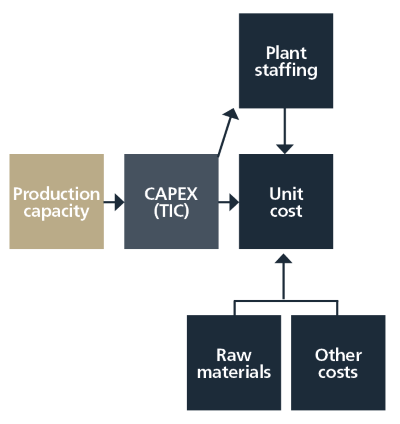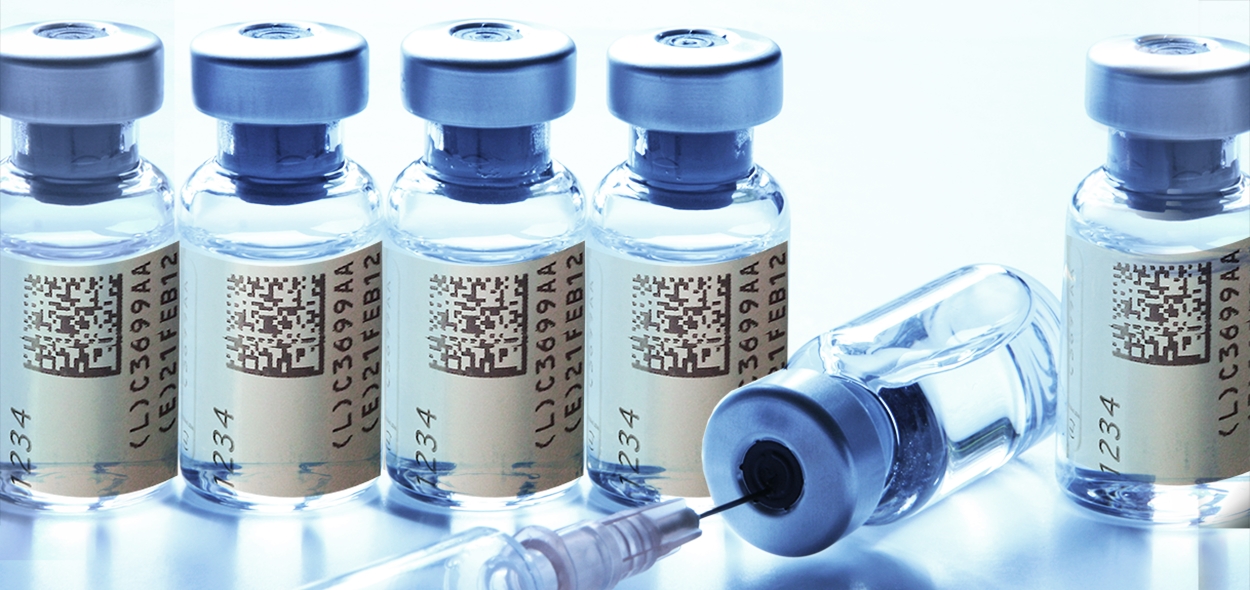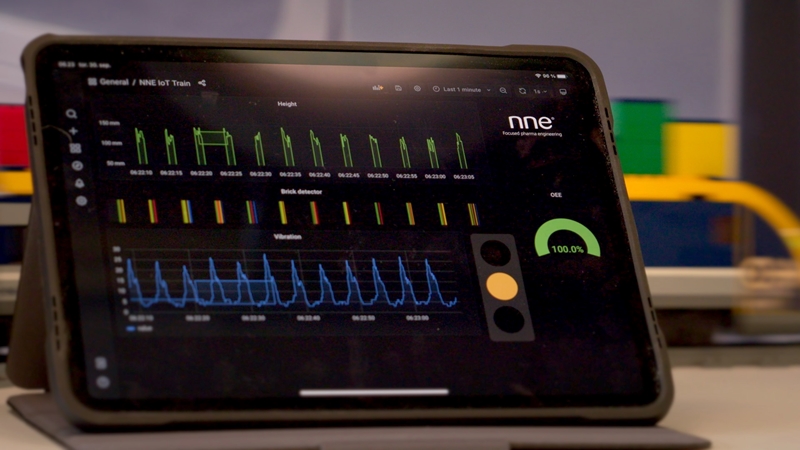A vital part of cost-effective pharma productions is balancing investment and unit cost. If unit costs are estimated to be high, it is key to understand where the biggest expenses derive and consider if they can be reduced (or change your investment strategy). If they are estimated to be low, the profit potential can be high.
What does “unit cost” mean?
The term for “unit cost” covers all costs related to the production of a product. Other frequently used names include:
- Unit Cost
- COGS - Cost of Goods Sold
- Opex / OpEx - Operating Expenses
- FMC - Full Manufacturing Cost
What has the biggest impact on my unit cost in pharma?
There are many different costs built into your unit cost. To accurately assess the final number, first we must understand which parameters have the most impact. This can vary significantly from case to case – but typically include facility location, raw materials, consumables, wages, shipping or depreciation. The output will depend on the complexity of the case, existing knowledge, benchmark possibilities and the need for accuracy.
The unit cost analysis found that more shifts on their existing lines would have a 7% lower unit cost than adding a new line, and less risk if sales were lower
Therefore, unit cost calculations typically start by estimating your:
- Raw materials cost
- Staffing cost (this includes all personnel related cost - including salaries, wages, social benefits, pension, bonus, insurance)
- Total investment cost (TIC)
- Consumables (i.e. the remaining part). This can include many items, but typically only adds up to a fraction of the above cost.
- Maintenance might be estimated as a separate item, e.g. based on the TIC, or included as part of the consumables.
- Overall Equipment Efficiency (OEE) and/or Total Capacity Utilization (TCU). For more information and detailed calculations on OEE and TCU, please read our TechTalk article Create value from data on the road to autonomous manufacturing.

*CAPEX stands for capital expenditure – the money a pharma company spends to buy, maintain, or improve its fixed assets, such as buildings or equipment.
Reducing unit cost – the balance between investment and value
Many pharma companies want to reduce their unit cost. Perhaps you have considered:
- Increasing work shifts
- Investing in more equipment
- Building your facility in a low-cost country
- Enhancing the automation level in your facility
- Optimising your production flow.
In theory, all these initiatives could help reduce unit cost. However, it is difficult to know without considering all outcomes and calculating the unit cost for each potential scenario.
Are you thinking of developing a new device, but not sure whether to do it internally or externally?
A recent unit cost evaluation centred on investigating new device candidates for new drug products. It was found that an internally developed device would have the lowest unit cost, but the initial investment was much higher than other options. To make the internally developed device economically attractive, sales numbers would have to be very high – which had a big impact on the overall business case.
Are you thinking of adding an extra packaging line? Or more staff?
A client needed to know which would be the most beneficial - adding an extra packaging line or adding more staff to existing lines. The unit cost analysis found that more shifts on their existing lines would have a 7% lower unit cost than adding a new line, and less risk if sales were lower. The client therefore chose to expand the number of working shifts rather than investing in the new line.
Do you want to attract investors?
Finally, performing a unit cost calculation can be beneficial for start-up companies looking to attract investors and buyers. If unit cost turns out to be low, the profit margin has the potential to be very high - making start-ups extremely attractive to major pharmaceutical companies interested in purchasing their smaller counterparts.
Overall, there are obvious benefits to performing unit cost calculations. Whichever scenario you're faced with, reliable unit cost estimates build a solid foundation for your business case or new pipeline products.



